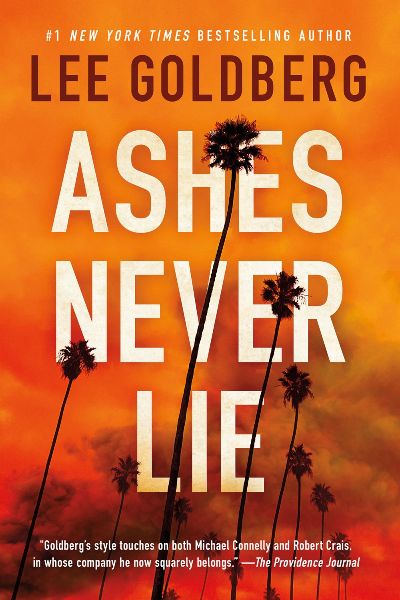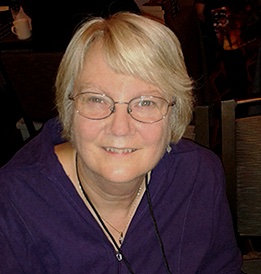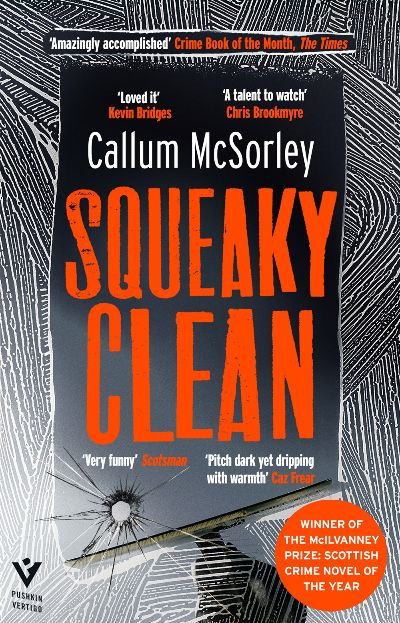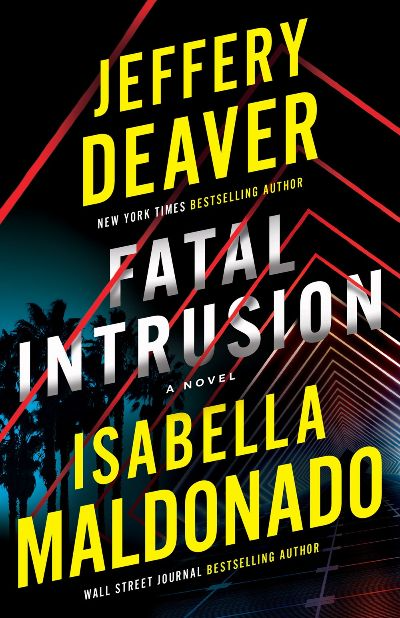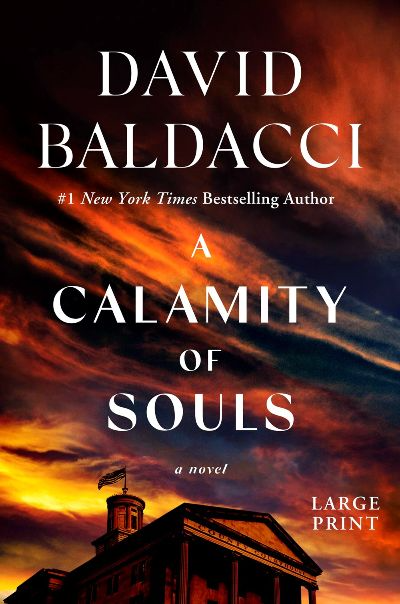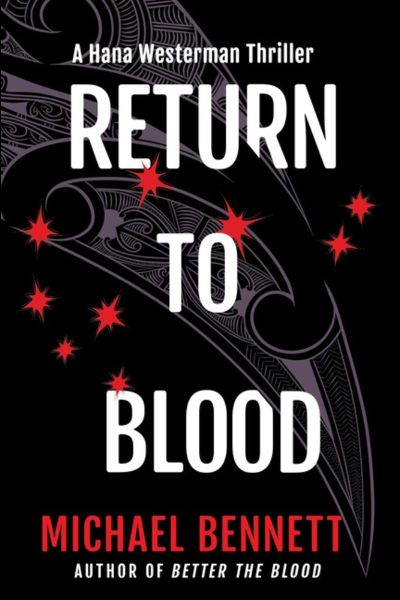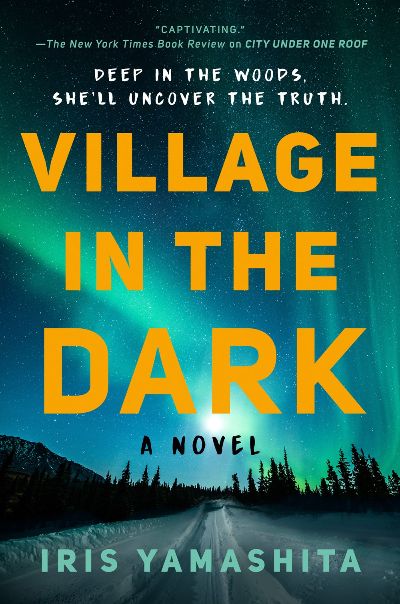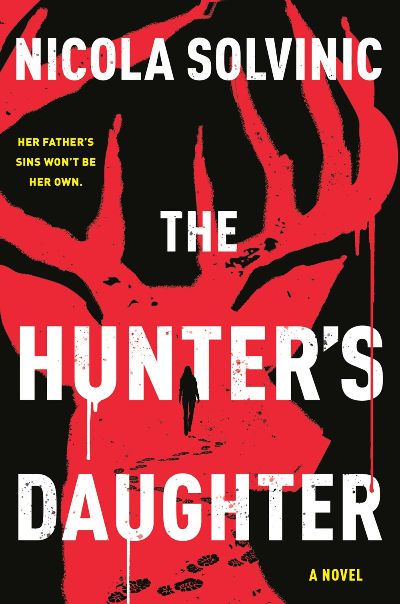What’s better than a gripping story that also teaches you a ton about a fascinating subject? That’s just what readers will get in Goldberg’s follow-up to Malibu Burning (2023). This time, odd-couple Los Angeles arson investigators Walter Sharpe and Andrew Walker are faced with several perplexing crimes. The central case involves a series of just-built, as-yet-uninhabited homes for the wealthy that combust in a far more explosive way than an empty house. Then there’s the man who’s found dead in a fire, but the fire didn’t kill him. Fraud pokes its head up too, with all keeping Sharpe—a genius with fire investigation, but socially not so much—and his still-learning partner busy with intriguing theories based on detailed descriptions of the workings of fire, accelerants, and more. The characterization here is wonderfully enjoyable, with the partners and their various associates bantering in ways that’s sometimes hilarious and always reveals the human behind the shield. Goldberg’s author’s note helpfully details the books about fire dynamics and investigation that he used for research, and readers may want to try these as well, notably Fireraisers, Freaks, and Fiends, “Torchered” Minds by former LA County arson and explosives detective Ed Nordskog, who also answered questions for the book.
Police Procedural
A missing nine-year-old boy has Deputy Mattie Wray bring her K-9 partner, Robo, into uncharted territory to initiate a search and rescue for him in Mizushima’s latest terrific series. By leaving Colorado and heading to the Olympic Mountains of Washington State, Mattie risks Robo’s job and delaying her wedding. From the start, the information she and the team of searchers receive is a bit sketchy. When one of the other searcher dogs gets ill, it becomes clear that someone doesn’t want the team to find this boy. Since the missing kid is the son of a celebrity, and the longer he’s out in the wilderness, the louder the clock is ticking to still find him alive and keep away the paparazzi. Mizushima’s series engages on every level: the authenticity of the search scenes; the setting, in which the reader can feel the moss and dampness of the region; and the insight into the operation of coordinated efforts to find missing people. Gathering Mist is the perfect place to start if you are unfamiliar with her previous novels, and Robo is the most incredible dog ever. Who’s a good boy?
Davey Burnet’s life is boring, tough drudgery, made no easier by his shame and frustration over having caused a lot of his own problems. He works at a Glasgow car wash where the work is both boring and freezing and the annoying customers bested only the even more draining pothead boss. But Davey wishes for the boredom back when an impulse decision brings a world of trouble down on him and the business. After nouveau-criminal-riche Paulo McGuinn takes to bringing his ostentatious vehicles to be cleaned and Davey “borrows” one of them to make it to a custody hearing for the daughter he desperately wants to see, the car is wrecked and suddenly Paulo is the de facto owner of the car wash and of Davey’s grim future. Paolo’s just-one-of-the-lads bonhomie is a wafer-thin veneer over viciousness; not taken in by it is DI Alison McCoist, whose pecking away at the car wash’s goings on are Davey’s only hope. While this fast-moving tale is dark and has moments of real terror, it’s also grimly hilarious, especially in McSorley’s skewering of Paolo’s inflated self regard. The dialog takes some getting used to, with the character’s thicker than thick Glasgow accents faithfully reproduced, but once readers acclimatize they’re in for a rollicking, satisfying read.
Two of my favorite writers have teamed up, and the pairing exceeds expectations. A nature photographer is killed, and a young woman named Selina narrowly avoids the same fate. Selina’s older sister, Carmen Sanchez, works for Homeland Security and wants answers. The attacker is methodical, ruthless, and seems to know every trick not to be seen or caught, though Selina did see he had a tattoo of a black widow spider on his wrist. With no motive and a heavily encrypted cell phone recovered at a crime scene, Carmen seeks the assistance of Professor Jake Heron, a teacher and security expert. Though they share a troubled past and probably should not be assisting each other, Carmen feels she has no alternative. Jake’s curiosity draws him directly into the case, and the reluctant duo is slowly drawn into the perpetrator’s web. This book reads like a great episode of Monk or Elementary, with law enforcement working closely with an expert consultant. Carmen and Jake have great chemistry, and the story reads like the best of Maldonado’s crime novels and Deaver’s thrillers. Fatal Intrusion is a must-read, and everyone will be dying for the next book.
In a small Virginia town in 1968, a Black man named Jerome works for an elderly white couple. On Friday, when he expects to get his weekly salary, he walks into their house and finds their dead bodies. The police arrive and accuse him of resisting arrest and beat him. In jail with a head wound and bruises, the innocent man has already been convicted. A white lawyer named Jack Lee takes the case and immediately finds himself in the crosshairs of hate. Working with a female Black lawyer from Chicago, Jack struggles for justice in a town and environment where the verdict is already a foregone conclusion, and there is no lifeline for him or the case. Baldacci is one of the great storytellers, and he channels John Grisham in this compelling and harsh story that explores racism, the criminal justice system, and family dynamics. Half legal thriller and half an examination of the South at one of its most tumultuous times, this will be yet another bestseller for Baldacci and a novel destined for book club discussions.
Following his acclaimed debut, Better the Blood, Michael Bennett’s compelling sophomore outing in his crime series starring Māori detective Hana Westerman proves the New Zealand screenwriter and author is no one-hit wonder as a mystery writer. In the wake of the traumatic events recounted in the first book, Hana has resigned from the Auckland CIB (Criminal Investigation Branch) and returned to her hometown of Tātā Bay, where she helps her father, Eru, prepare local Māori teens to get their driver’s licenses. But the calm Hana is trying to rebuild is shattered when her 18-year-old daughter, Addison, discovers the skeleton of a young woman in the sand dunes. Investigators suspect the bones may be those of Kiri Thomas, a Māori teenager who disappeared four years earlier. Although Hana is no longer in the police force, she begins to probe the possibility that Kiri’s death may be connected to the 21-year-old unsolved murder of Paige Meadows, whose body was found in the same dunes. Likewise, Addison becomes obsessed with Kiri’s fate, threatening her friendship with her non-binary flatmate and musical partner, Plus 1. In a nod to Alice Sebold’s The Lovely Bones, the storyline is interspersed with the dead Kiri’s haunting first-person narrative. Bennett, who is Māori, immerses readers deeper into Māori culture and traditions as he expands on Hana’s loving relationship with her father and tense interactions with her chilly second cousin, Eyes. An atmospheric thriller that will have readers booking flights to New Zealand. Bennett is adapting Better the Blood into a six-part TV series for Taika Waititi’s production company.
A classic mystery that pulls the reader in and doesn’t let go until there’s a resolution. It’s the mid-1960s, and Franklin Warren arrives in small-town Bethany, Vermont to join the state troopers as a detective. It’s a time of change: as young men head to Canada to escape the draft, the state is developing highways that, many fear, will change Vermont irrevocably, while the echoes of the Cold War continue to reverberate. Warren is also escaping his own demons, a tragic occurrence he left behind in Boston but is unable to forget. But before he can unpack—literally!—he’s called to investigate a fire; Hugh Weber, a hippie farmer, has burnt down his barn and likely killed himself, although evidence of suicide is scant. Warren digs deep into the community, from Weber’s widow to Warren’s elderly next-door-neighbor, a retired intelligence agent. Secrets abound, but which one will unveil the murderer? Fans of Kay Jennings and Jeff Carson will appreciate this new series by the author of The Drowning Sea.
Frankie Elkin finds missing people, most of whom are deceased. She is not law enforcement or a PI; her skills are merely a hobby. But she’s one of the best when someone wants to discover the truth and find closure. Frankie’s summoned to the prison where Kaylee Pierson, the so-called Beautiful Butcher, is on death row, scheduled to be executed in three weeks. The condemned woman asks Frankie to find her missing sister before the lethal injection is administered. The information Frankie receives from Kaylee and Kaylee’s attorney puts her on an undercover mission to a remote island south of Hawaii to work with a small team employed by a tech mega-billionaire. With no technology and no way to get immediate help, Frankie will be stretched to her limits, and what she uncovers will surprise even the most jaded thriller readers. Gardner has a gift for writing about the grim and dark world of crime while focusing on hope and humanity. Taken meets Glass Onion in this terrific novel, and holy cow, the ending! Still See You Everywhere is a perfect place to start if you are not familiar with Frankie, and a fantastic continuation of the series if you have already had the pleasure.
Readers last visited the remote Alaskan town of Point Mettier in Yamashita’s debut, City Under One Roof, (Please note-the link is to a prior firstCLUE review) a title that perfectly describes the town that consists of a single apartment building with 205 residents, stores, and even a bar inside. This time, we are reintroduced to Cara Kennedy, a former Anchorage PD detective, as she’s having her husband’s and son’s bodies exhumed. She can’t stop suspecting foul play even though everyone is fed up that she won’t accept that they died of a hiking accident—she’s even lost her job because of her suspicions. But she’s now found a photo of her dead loved ones on a gang member’s phone. There’s no explanation for it, and her investigation is forcing her to visit the remote village of Chugach, with a trip through Point Mettier the only way in. Other wronged women are simultaneously facing pain and their paths are destined to meet: Ellie, owner of the Cozy Condo Inn in Point Mettier, gets a devastating call just as Kennedy’s on her way. We also meet Mia, a former Chugach resident who’s trying the outside world for the first time, meeting fears yet forging her way. These are fascinating characters and circumstances, and the story that brings them together and sees them struggling against inner demons, and very real danger, is gripping. For readers who enjoy offbeat tales and wilderness thrillers as well as for fans of the author’s debut.
Subterfuge and supernatural elements infuse this dark, absorbing debut. Our protagonist is Midwestern police detective Anna Koray, who’s had a relatively staid career until she makes the mistake of confronting a violent perpetrator without backup. She kills him, but is shot herself in the process. When recovering, she’s required to undertake counseling; at the same time, she pushes herself into the investigation of a serial killer whose horrifying work resembles that of her father, who years ago was executed for his murder of multiple women as sacrifices to a forest god. Both Anna’s colleagues and the doctor she’s in a burgeoning relationship with have no idea that she spent her childhood in thrall to the Forest Strangler. Anna herself doesn’t even have all the details, which were sealed away in her subconscious by a manipulative therapist whom she now sees for the reverse process, setting in motion an emotional and dangerous roller coaster of unraveling secrets and treacherous confrontations. A cold-case podcaster adds a moral dilemma to the exciting tale—when is it better to leave the truth buried? Readers who enjoy a wilderness thriller, such as Elizabeth Hand’s Hokuloa Road or Paul Doiron’s Dead Man’s Wake, will appreciate this story.

